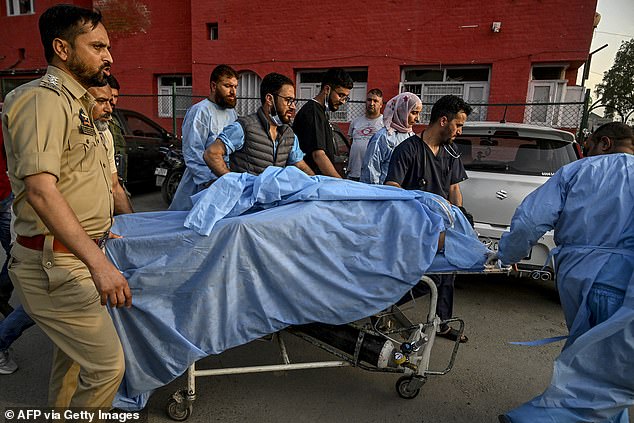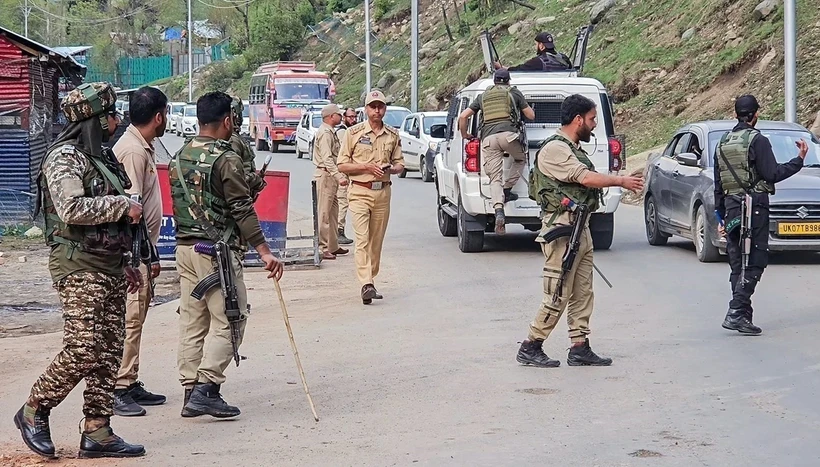Pahalgam, Kashmir – April 22, 2025 – In one of the bloodiest attacks in Kashmir in recent years, a group of armed militants opened fire on a crowd of tourists in the popular Baisaran valley, near the town of Pahalgam. According to official reports from the Jammu and Kashmir administration, at least 28 people were killed and more than 20 others injured, several of whom are in critical condition.
Attack details: Posing as police, selecting victims for execution
At approximately 2:50 PM local time, while the scenic Baisaran area was bustling with tourists from across India and abroad, 4 to 6 gunmen dressed in police uniforms emerged suddenly from the surrounding pine forest. According to eyewitnesses, the attackers posed as law enforcement officers, asking tourists to line up and show identification documents.
When the crowd began to comply, the assailants abruptly pulled out AK-47 rifles and opened fire indiscriminately. Alarmingly, they asked individuals to recite the Kalma, an Islamic declaration of faith, and conducted physical inspections to determine religious identity. Those deemed non-Muslim—especially followers of Hinduism—were shot dead on the spot. One survivor recalled, “I heard them say: ‘Anyone who cannot recite the Kalma has no right to live here.’”
Victims identified: A tragedy spanning many regions
Among the 28 deceased were 24 Indian tourists from various states including Karnataka, Kerala, Maharashtra, Odisha, Gujarat, Haryana, West Bengal, and Uttar Pradesh. Two foreign tourists—one from Nepal and another from the United Arab Emirates—were also among the victims. A 26-year-old Indian Navy officer and an Intelligence Bureau operative lost their lives while attempting to fight back.
Some identified victims include:
- Shyam Patel, 34, a software engineer from Gujarat
- Anjali Menon, 29, an English teacher from Kerala
- Iqbal Hussain, 46, a businessman from Maharashtra, mistakenly targeted despite being Muslim
- Lt. Rohan Singh, Navy officer, died shielding his family
More than 20 injured victims are receiving treatment at military hospitals in Srinagar and nearby medical facilities.
Government response: “We will avenge this”
Prime Minister Narendra Modi immediately cut short his diplomatic visit to Saudi Arabia and returned to India to address the crisis. In a nationally televised address, he declared: “The blood of innocent people will not be spilled in vain. India will not tolerate terrorism. We will hunt down and destroy every last one of them.”
Home Minister Amit Shah flew to Srinagar to oversee the investigation and direct security reinforcements. Indian Border Security Forces (BSF), the National Investigation Agency (NIA), and the Indian Army launched a joint operation to track the suspects, enforcing a large-scale cordon in the forested region surrounding Baisaran.
By the morning of April 23, three suspects had been apprehended at a checkpoint in Anantnag, about 40 kilometers from the attack site. One of the suspects was wounded in a firefight with security forces.
Global reaction: United against terrorism
The international community swiftly condemned the barbaric attack. U.S. President Donald Trump issued a statement saying, “This is an act of brutal terrorism. The United States stands with the people of India in defending freedom and security.”
Russian President Vladimir Putin also denounced the attack as “a savage act,” pledging technological and intelligence-sharing support to India. British Prime Minister Rishi Sunak, French President Emmanuel Macron, and several other world leaders expressed condolences and solidarity.
Perpetrators: The Resistance Front claims responsibility
The militant group The Resistance Front (TRF), an offshoot of the Pakistan-based Lashkar-e-Taiba organization, claimed responsibility for the attack shortly afterward. In a message posted online, the group cited their opposition to India’s settlement policies in Kashmir as the motive for the assault.
Security analysts noted the high level of planning and training involved in the attack. Professor Arvind Rao, an expert in international security, commented: “The use of police disguises and targeted selection indicates access to intelligence and tactical preparation. This poses a major challenge for India’s security apparatus.”
Societal impact: Rising religious tensions and fears of unrest
The attack has not only caused immense human suffering but also sparked fears of growing religious polarization in India. Protests erupted in several northern states, with demonstrators demanding stronger action in Kashmir. Some protests turned tense, leading to minor clashes with police forces.
India’s Human Rights Commission urged the government to act firmly against terrorism while also avoiding retaliatory measures that could fuel further division.
Conclusion: Lingering pain and questions about Kashmir’s future
As the gentle sunlight falls over the once-peaceful forests of Pahalgam, the landscape now stands stained with blood and sorrow. The massacre serves as a grim reminder that Kashmir—despite being hailed as “paradise on earth”—remains haunted by the specter of violence.
Preventing such tragedies in the future will require not only stronger security measures but also a long-term strategy to build peace and unity among communities. Until then, the echoes of gunfire in Pahalgam will resound as a chilling indictment of global inaction and regional fragility.






